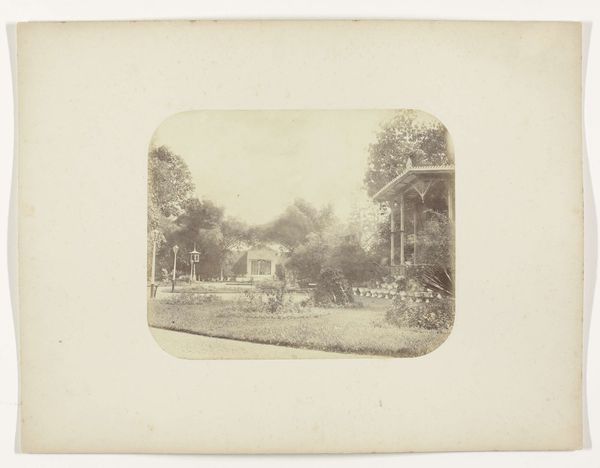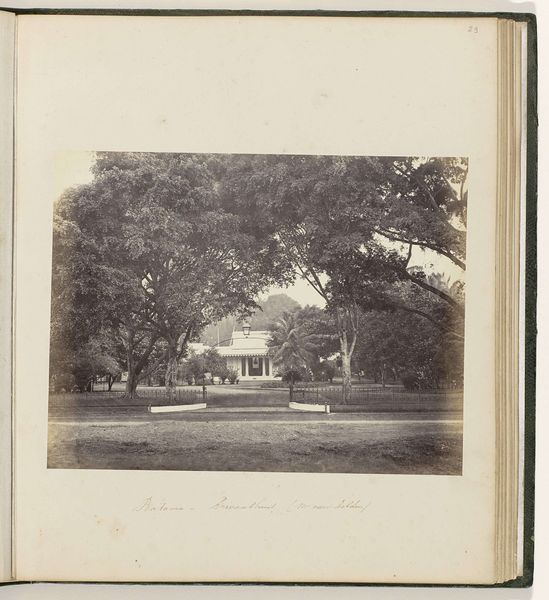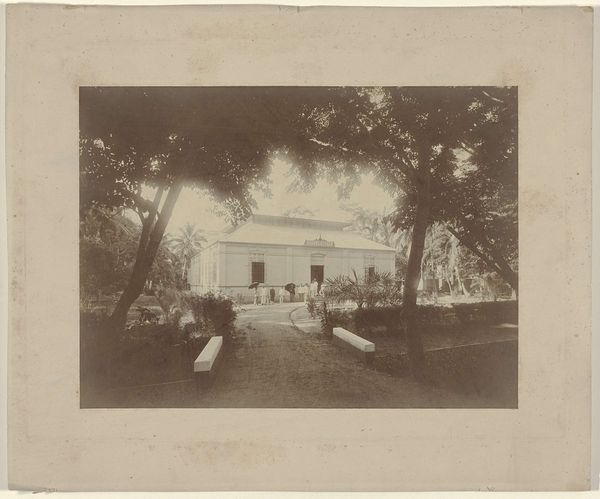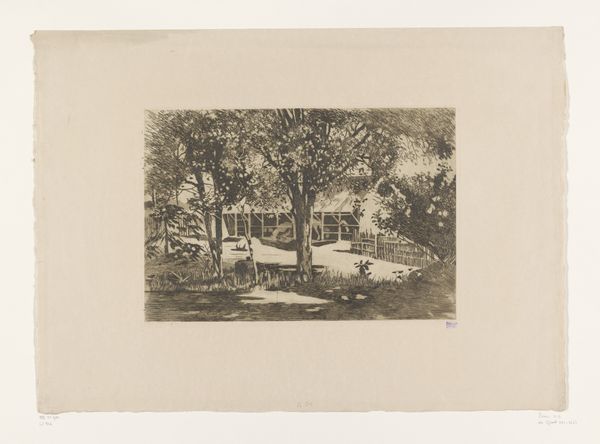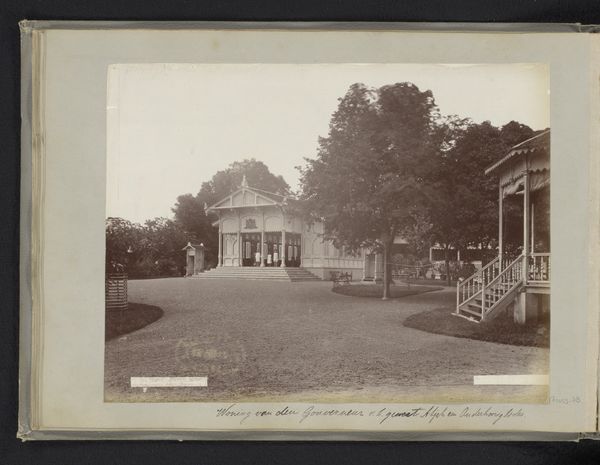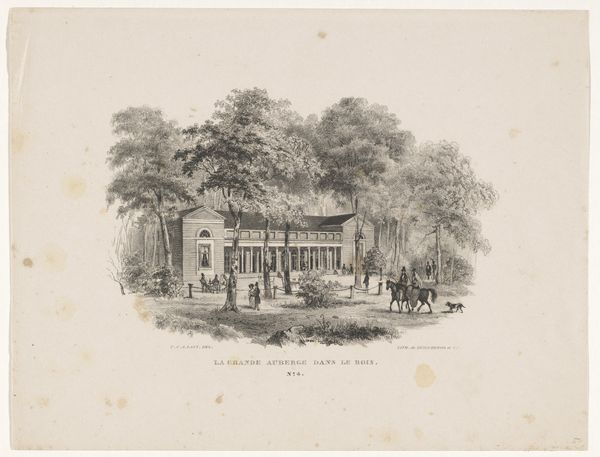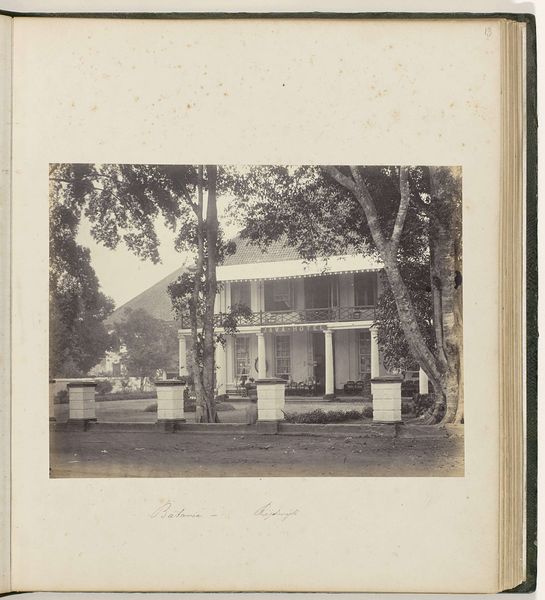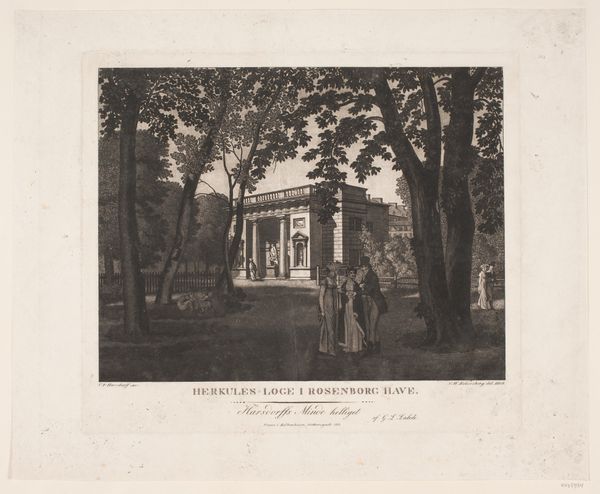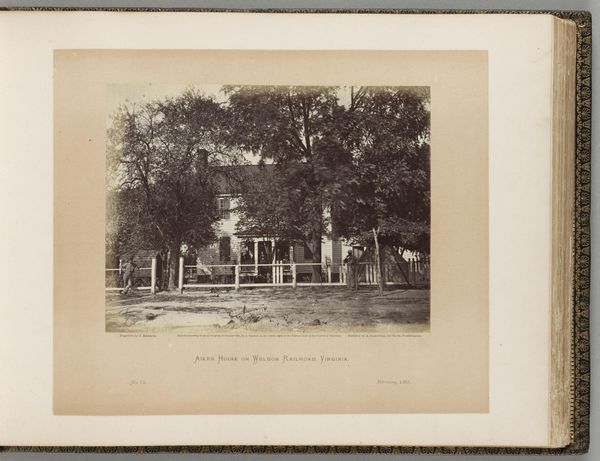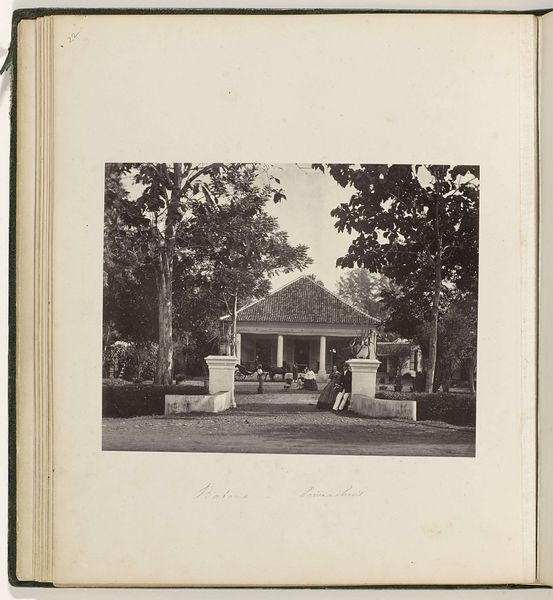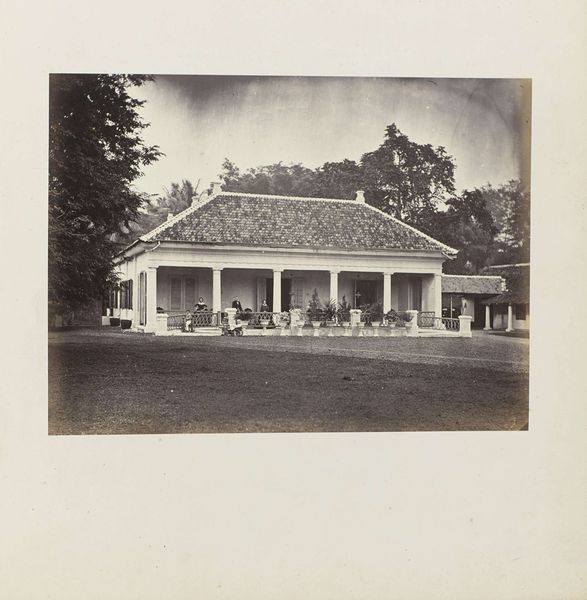
photography
#
landscape
#
photography
#
orientalism
#
cityscape
#
street
Dimensions: height 205 mm, width 270 mm
Copyright: Rijks Museum: Open Domain
Curator: What a striking image of colonial life. This photograph, taken by Woodbury & Page between 1863 and 1866, shows a private house in Tanah-Abang, then part of Batavia, now Jakarta. It’s called "Batavia - Privaathuis op Tanah-Abang (mr Pels)." Editor: The first word that comes to mind is “enclosure.” I feel visually barricaded by those dominant trees. Despite the beautiful greenery, there's an immediate sense of restriction and hierarchy. Curator: Yes, the trees frame the composition in a way that directs our gaze toward the architecture, yet they also create a kind of screen. Do you find any particular elements in the imagery that convey a sense of continuity or recurrence for you? Editor: Absolutely, the stark contrast between the lush, tropical setting and the distinctly European architectural style broadcasts a clash of cultures. The shadows definitely accentuate the alienation in the house and in the individuals near the walls in the picture. There's a narrative of power dynamics and a disruption of cultural spaces right there. Curator: Indeed. We see the veranda, a semi-public space, almost like a buffer between the private interior and the exterior world. The symbolism of light and shadow becomes crucial here, as you suggested, especially in the construction of space and power in colonial photography. These spaces reflect not just physical boundaries but social ones too. Editor: It makes you wonder about Mr. Pels and the role this home played. How many locals were displaced to create such a residence? What was daily life like within those walls? The serenity of the image feels deceptive; there’s something profoundly unsettling about its implicit colonial narrative. The contrast, for me, creates a symbolic weight of displacement. Curator: Exactly. It invites contemplation of cultural encounters. We tend to connect the images, objects, spaces and buildings, with particular meanings and sensations of past realities that were themselves replete with different cultural meanings. These types of visuals definitely shaped public imagination. Editor: Reflecting on this, the photo now strikes me less as a landscape and more as a charged, constructed tableau—a study in contrasts and colonial power, masked by an idyllic veneer. Curator: I agree completely. The visual layering within this image serves to amplify the complex story of its creation and reception.
Comments
No comments
Be the first to comment and join the conversation on the ultimate creative platform.

